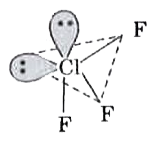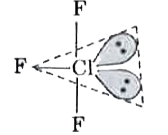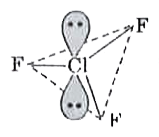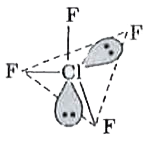Concept Of Hybridisation
Step by step video & image solution for Concept Of Hybridisation by Chemistry experts to help you in doubts & scoring excellent marks in Class 11 exams.
Updated on:21/07/2023Similar Questions
Different theories have been put forward to explain the geometrical of co-ordianation compounds. Out of them , the most practical is the valence bond theory which is based upon the concept of hybridisation . According to this , the complexes with C.N.4 may be either tetrahedral (sp3 hybridised ) or square planar (dsp2 hybridised ) in nature. Similarly , in the octahedral complexes , the metal atom or ion is either paramagnetic if one or more orbitals are half-filled and diamagnetic if all are filled in nature.
Which has the highest paramagnetic character ?
View SolutionDifferent theories have been put forward to explain the geometrical of co-ordianation compounds. Out of them , the most practical is the valence bond theory which is based upon the concept of hybridisation . According to this , the complexes with C.N.4 may be either tetrahedral (sp3 hybridised ) or square planar (dsp2 hybridised ) in nature. Similarly , in the octahedral complexes , the metal atom or ion is either paramagnetic if one or more orbitals are half-filled and diamagnetic if all are filled in nature.
5. Which is correct in the case of complex ?
View Solution
Knowledge Check
In order to explain the characteristic geometrical shapes of polyatomic molecules, Pauling introduced the concept of hybridisation. The orbitals undergoing hybridisation should have nearly same energy. There are various types of hybridisations involving s, p and d - type of orbitals. The type of hybridisation gives the characteristic shape of the molecular or ion.
Which molecule does not have the same type of hybridisation as P has in PF5?AClF3BSF4CXeF4DXeF2In order to explain the characteristic geometrical shapes of polyatomic molecules, Pauling introduced the concept of hybridisation. The orbitals undergoing hybridisation should have nearly same energy. There are various types of hybridisations involving s, p and d - type of orbitals. The type of hybridisation gives the characteristic shape of the molecular or ion.
Which of the following has correct placement of lone pairs and bond pairs?A B
B C
C D
D
In order to explain the characteristic geometrical shapes of polyatomic molecules, Pauling introduced the concept of hybridisation. The orbitals undergoing hybridisation should have nearly same energy. There are various types of hybridisations involving s, p and d - type of orbitals. The type of hybridisation gives the characteristic shape of the molecular or ion.
Which of the following molecule/ion does not have same number of lone pairs?ASF4BPH3CClO−3DXeF2
Different theories have been put forward to explain the geometrical of co-ordianation compounds. Out of them , the most practical is the valence bond theory which is based upon the concept of hybridisation . According to this , the complexes with C.N.4 may be either tetrahedral (sp3 hybridised ) or square planar (dsp2 hybridised ) in nature. Similarly , in the octahedral complexes , the metal atom or ion is either paramagnetic if one or more orbitals are half-filled and diamagnetic if all are filled in nature.
Which statements is incorrect ?
View SolutionThe concept of hybridisation has been introduced to explain the shapes of molecules. It involves the intermixing of two or more atomic orbitals belonging to same atom but in or more atomic orbitals beloging to sasme atom but in different sub-shells so as to intermix and redistibute energies to from equivalent orbitals called hybrid orbitals.Depending upon toh enumber and nature of the orbitals involved, the hybridisation may be divided into sp (linear), sp2 (trigonal), sp3 (tetrahedral), sp3d (trigonal bipyramidal), sp3d3 (octahedral) and sp3d3 (pentagonal bipyramidal) types. it may be noted that the orbitals of isolated atoms never hybridise and they do so at the time of bond formation.
The hybridisation of phostphorus in PCOl3 is the same as:
View SolutionThe concept of hybridisation has been introduced to explain the shapes of molecules. It involves the intermixing of two or more atomic orbitals belonging to same atom but in or more atomic orbitals beloging to sasme atom but in different sub-shells so as to intermix and redistibute energies to from equivalent orbitals called hybrid orbitals.Depending upon toh enumber and nature of the orbitals involved, the hybridisation may be divided into sp (linear), sp2 (trigonal), sp3 (tetrahedral), sp3d (trigonal bipyramidal), sp3d3 (octahedral) and sp3d3 (pentagonal bipyramidal) types. it may be noted that the orbitals of isolated atoms never hybridise and they do so at the time of bond formation.
A hybrid orbital from s-and p-orbitals can contribute to
View SolutionThe concept of hybridisation has been introduced to explain the shapes of molecules. It involves the intermixing of two or more atomic orbitals belonging to same atom but in or more atomic orbitals beloging to sasme atom but in different sub-shells so as to intermix and redistibute energies to from equivalent orbitals called hybrid orbitals.Depending upon toh enumber and nature of the orbitals involved, the hybridisation may be divided into sp (linear), sp2 (trigonal), sp3 (tetrahedral), sp3d (trigonal bipyramidal), sp3d3 (octahedral) and sp3d3 (pentagonal bipyramidal) types. it may be noted that the orbitals of isolated atoms never hybridise and they do so at the time of bond formation.
The hybrid state of carbon in C2H2 is same as that of carbon in:
View SolutionThe concept of hybridisation has been introduced to explain the shapes of molecules. It involves the intermixing of two or more atomic orbitals belonging to same atom but in or more atomic orbitals beloging to sasme atom but in different sub-shells so as to intermix and redistibute energies to from equivalent orbitals called hybrid orbitals.Depending upon toh enumber and nature of the orbitals involved, the hybridisation may be divided into sp (linear), sp2 (trigonal), sp3 (tetrahedral), sp3d (trigonal bipyramidal), sp3d3 (octahedral) and sp3d3 (pentagonal bipyramidal) types. it may be noted that the orbitals of isolated atoms never hybridise and they do so at the time of bond formation.
Which carbon is maximum electronegative ?
View Solution
